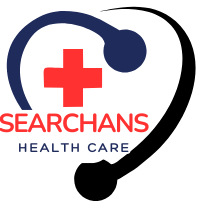The world of medicine is constantly evolving, with breakthrough treatments paving the way for new hope and healing. These innovative therapies are not just theoretical possibilities—they are transforming patient care, extending lives, and improving the quality of life for millions. This blog explores some of the most groundbreaking advancements in the medical field, offering insight into their current applications and the promise they hold for the future.
Gene Therapy Advances
Gene therapy has emerged as one of the most revolutionary developments in medicine, offering hope for previously untreatable genetic disorders. By directly modifying an individual’s DNA, this innovative treatment targets the root cause of diseases rather than simply addressing symptoms. Diseases like spinal muscular atrophy (SMA) and certain rare forms of inherited blindness have already seen remarkable progress thanks to gene therapy. For example, Zolgensma, an approved therapy for SMA, has drastically improved outcomes for children affected by this debilitating condition.
The potential applications of gene therapy extend far beyond rare diseases. Research is rapidly progressing in the treatment of hemophilia, some forms of cancer, and even viral infections like HIV. With ongoing advancements and increased accessibility, gene therapy is poised to become a standard approach to treating a wide range of medical conditions.
Immunotherapy for Cancer
Cancer treatment has undergone a paradigm shift with the introduction of immunotherapy, which harnesses a patient’s immune system to target and destroy cancer cells. Unlike chemotherapy or radiation, which can harm healthy tissues, immunotherapy is designed to selectively empower the immune system, making it a more precise and potentially safer approach.
Checkpoint inhibitors, CAR-T cell therapies, and cancer vaccines are just a few examples of immunotherapy options that are transforming the oncological landscape. For instance, treatments like Pembrolizumab (Keytruda) have shown astounding success in treating advanced melanoma, lung cancer, and other malignancies. What sets immunotherapy apart is its ability to induce long-lasting remission in some patients, opening up the possibility of a true cancer cure for certain individuals.
Targeted Drug Delivery
Traditional methods of drug administration often affect the entire body, leading to unwanted side effects. Targeted drug delivery, however, represents a significant breakthrough in minimizing harm while maximizing the therapeutic impact on specific tissues or organs.
This technique works by attaching drugs to specialized carriers, such as nanoparticles or liposomes, which deliver medication directly to the disease site. A significant contribution of targeted drug delivery is its application in oncology, as it allows chemotherapeutic drugs to bypass healthy tissues and directly attack tumors. Similar advancements are being made in addressing chronic conditions like cardiovascular diseases or neurological disorders. By ensuring that medication reaches only where it’s needed most, patients can experience higher efficacy with fewer adverse effects.
Advances in Robotic Surgery
Precision often makes the difference between a successful medical outcome and complications. Robotic surgery is a remarkable breakthrough that enhances surgical accuracy, reduces invasiveness, and shortens recovery times. Robotic systems, such as the da Vinci Surgical System, allow surgeons to perform complex procedures with unparalleled precision using miniaturized instruments and high-definition cameras.
From cardiology to urology and orthopedics, robotic surgery is being widely adopted across various specialties. For instance, this technology has improved outcomes in prostatectomies and mitral valve repairs. With additional training and refinement of these systems, the future of surgery looks increasingly automated, allowing for better patient outcomes and expanded access to minimally invasive options.
3D Printing in Medicine
The advent of 3D printing technology has created exciting opportunities within the medical sector. With the ability to create customized prosthetics, implants, and even human tissue models, 3D printing is personalizing treatment like never before. Its applications have become particularly valuable in orthopedics and reconstructive surgery, providing tailored solutions for patients needing limb replacements or bone implants.
Additionally, 3D printing is revolutionizing drug research and development. Tablets with precise dosage quantities, tailored to individual patients’ needs, are being prototyped. Furthermore, bioprinting has entered the spotlight as researchers explore printing functional human organs, hinting at a future without the need for donor lists.

Artificial Intelligence in Diagnostics
When it comes to diagnosing medical conditions, artificial intelligence (AI) is proving to be a game-changer. By analyzing vast sets of medical data, AI systems can identify patterns and detect diseases faster and more accurately than traditional diagnostic methods. Radiology, in particular, has benefited significantly, with AI tools like Google’s DeepMind predicting the onset of conditions like breast cancer by analyzing mammograms.
Beyond imaging, AI-powered chatbots and virtual assistants are also being utilized to triage symptoms and offer preliminary diagnoses. Companies like PathAI are even addressing errors in biopsies by using machine learning to fine-tune pathology reports. By improving diagnostic speed and accuracy, AI is allowing doctors to intervene earlier, potentially saving countless lives in the process.
Regenerative Medicine
Regenerative medicine is making leaps and bounds, driven by breakthroughs in stem cell research. This innovative field aims to replace or regenerate damaged tissues and organs, restoring their original functionality. One of the most well-known applications of regenerative medicine is in treating injuries to the spinal cord, where stem cell therapy has shown promise in helping patients regain mobility.
Another significant area of research is in organ repair. By engineering tissue from a patient’s own cells, scientists hope to eliminate the need for donor organs in transplantation. While still largely experimental, the progress in this area hints at a future where regenerative medicine can address conditions ranging from heart disease to neurodegenerative disorders, such as Parkinson’s.
The Role of Clinical Trials
Every breakthrough treatment owes its development to rigorous clinical trials. Clinical trials play a critical role in testing the safety and effectiveness of new therapies before they are made widely available. They provide researchers with invaluable data, helping fine-tune treatments and iron out any potential risks.
Participation in clinical trials not only gives patients access to cutting-edge therapies but also contributes to advancing medical science for future generations. Organizations like the National Institutes of Health (NIH) and pharmaceutical companies invest heavily in clinical research, ensuring that emerging treatments undergo meticulous evaluation before reaching the public.
Future Directions
Looking ahead, the possibilities for breakthrough medical treatments are truly inspiring. Innovations such as CRISPR gene editing, quantum computing for drug discovery, and nanotechnology for precision medicine are on the verge of becoming game-changers. By integrating technologies like AI, robotics, and genetic engineering, the future is set to deliver treatments that today might seem like science fiction.
However, with such advancements come ethical questions and accessibility challenges. Ensuring that all patients—regardless of socioeconomic status—benefit from these treatments will remain a significant focus for healthcare professionals and policymakers alike as we venture into this exciting new era of medicine.
The Dawn of a Healthier Tomorrow
Breakthrough treatments for serious medical conditions are reshaping the healthcare landscape, offering new hope to those battling illnesses once deemed incurable. From gene therapy to AI diagnostics, these advancements reflect the incredible progress we’ve made—and the promising horizon ahead.
If you’re inspired by these innovations, it’s worth staying informed about upcoming discoveries and how they can impact healthcare globally. By fostering awareness and supporting clinical research, we can all contribute to a healthier, brighter future.




